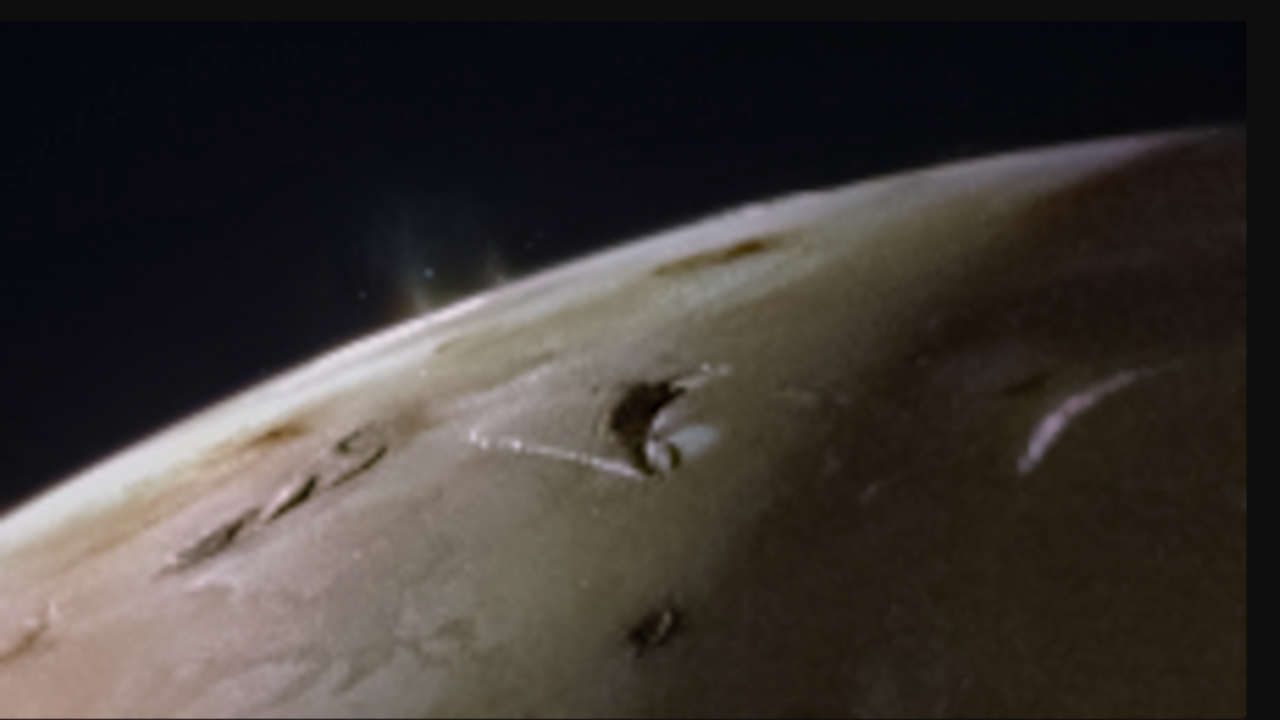The findings, published on June 20 in Nature Communications Earth and Environment, include the detection of widespread lava lakes and new details about volcanic processes.
Io has fascinated astronomers since its discovery by Galileo Galilei in 1610.
Nasa’s Voyager 1 revealed the first volcanic eruption on Io in 1979, and subsequent missions confirmed that Io is the most volcanically active body in the solar system. Despite numerous theories about Io’s volcanic activity, concrete data has been scarce.
In May and October of 2023, Juno performed close flybys of Io, coming within 21,700 miles and 8,100 miles of the moon’s surface. JIRAM, which captures infrared light that is invisible to the human eye, was used to gather detailed images during these flybys.
JIRAM was originally designed to study Jupiter’s atmosphere, probing 30 to 45 miles below the gas giant’s cloud tops. However, during Juno’s extended mission, the instrument has also been used to study Jupiter’s moons, including Io, Europa, Ganymede, and Callisto. JIRAM’s images of Io revealed bright rings around the floors of numerous hot spots.
Looking Into Io’s Loki Patera (Artist’s Concept)
The lava lakes on Io not only underscore the moon’s abundant lava reserves but also hint at subterranean activity. Infrared images show a thin circle of lava at the border between the central crust and the lake’s walls. This balance between erupted lava and subsurface melt suggests a continuous recycling of material.
“We now have an idea of what is the most frequent type of volcanism on Io: enormous lakes of lava where magma goes up and down,” said Mura. “The lava crust is forced to break against the walls of the lake, forming the typical lava ring seen in Hawaiian lava lakes. The walls are likely hundreds of meters high, which explains why magma is generally not observed spilling out of the paterae and moving across the moon’s surface.”
JIRAM data indicates that the rocky crust of these hot spots moves cyclically due to the central upwelling of magma. When the crust touches the lake’s walls, friction prevents it from sliding, causing it to deform and break, revealing the underlying lava.
An alternative theory suggests magma wells up in the center of the lake, forming a crust that sinks along the rim, exposing lava. Both hypotheses remain under consideration.
“We are just starting to wade into the JIRAM results from the close flybys of Io in December 2023 and February 2024,” said Scott Bolton, principal investigator for Juno at the Southwest Research Institute in San Antonio. “The observations show fascinating new information on Io’s volcanic processes. Combining these new results with Juno’s longer-term campaign to monitor and map the volcanoes on Io’s never-before-seen north and south poles, JIRAM is turning out to be one of the most valuable tools to learn how this tortured world works.”
Juno executed its 62nd flyby of Jupiter, including a close pass of Io at an altitude of about 18,175 miles, on June 13. The next flyby is scheduled for July 16.
Nasa’s Jet Propulsion Laboratory in Pasadena, California, manages the Juno mission, and Scott Bolton of the Southwest Research Institute in San Antonio is the principal investigator. The mission is part of Nasa’s New Frontiers Program, managed by Nasa’s Marshall Space Flight Center in Huntsville, Alabama. The Italian Space Agency funded the Jovian InfraRed Auroral Mapper, and Lockheed Martin Space in Denver built and operates the spacecraft.


